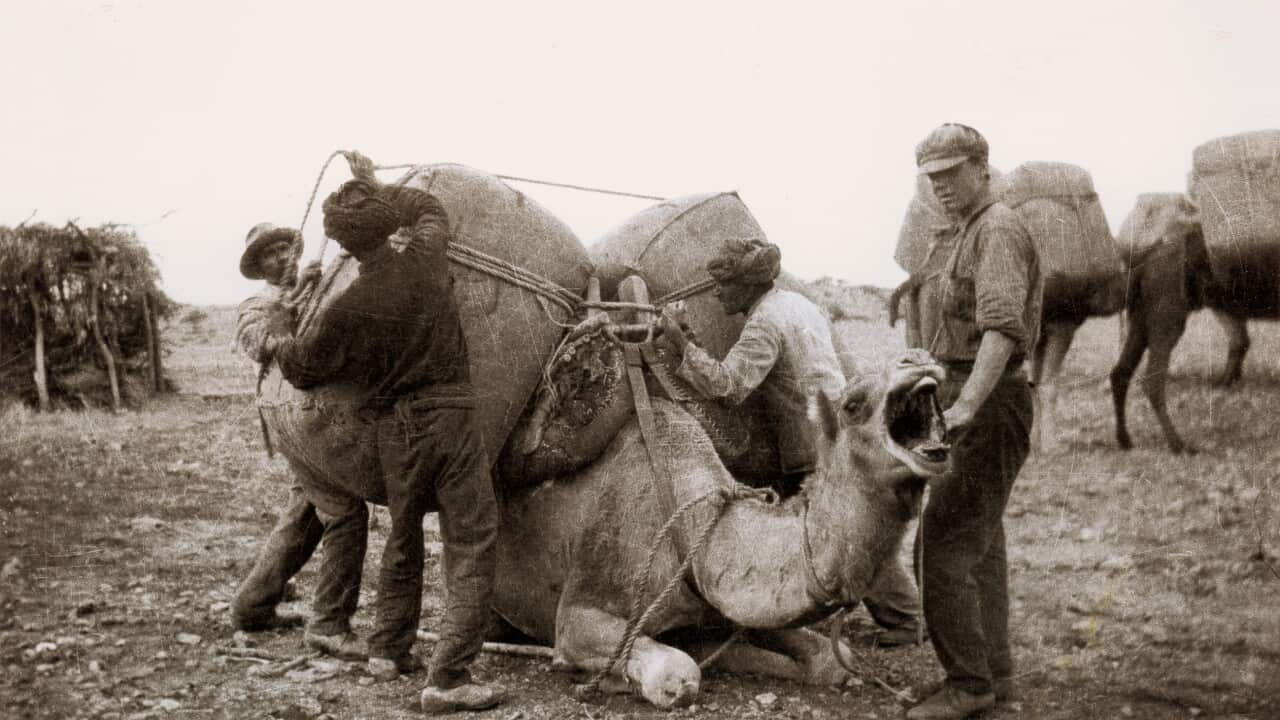Key Points
- Taufiq Rind is proud of his Yamatji-Badimaya Aboriginal and South Asian roots.
- As the fourth-generation descendant of a Balochi cameleer, he wants his ancestors’ stories to be preserved.
- Around 800,000 followers of Islam in Australia are observing Ramadan
Taufiq Rind is among the celebrating the fasting month of Ramadan this year.
For Mr Rind, 45, the holy period is a time to reflect on his multi-faceted identity. He is a fourth-generation descendent of a Balochi cameleer and he is also a proud Yamatji-Badimaya Aboriginal man.
He is one of the 1,140 people in the country who identify as Aboriginal Muslims, as per the 2021 Census.

Taufiq Rind (sitting left) at the age of 15 with his younger brother and parents.
In my experience, Indigenous Australians are generally very accepting of our background as they can resonate with the pain that our family has had to endure.
A cameleer’s legacy
Mr Rind was born in Karachi, Pakistan, but has called Perth, Australia, home since his late teens. His great-grandfather, Goolam Badoola Rind, arrived in the South Australian town of Port Augusta in 1885 from the modern-day Pakistani province of Balochistan.

The Mosque at Hergott Springs. Worshippers used the pool for ablution, c. 1884-Courtesy of the State Library of South Australia.
The cameleers were mostly from Afghanistan hence their nickname of the 'Ghan'.
However, many also came from other areas of Asia and the Middle East including India and the region now known as Pakistan and Persia (now called Iran) and were adherents of the Islamic, Sikh and Hindu faiths.
Cameleers are today credited with opening up Australia in the late 1800s, helping to transport wool and other essential items across the Outback.
They also helped introduce Islam to Australia and built the first mosque in Marree, South Australia.

An Afghan cameleer stands in front of a camel train laden with bags of chaff, c. 1911-Courtesy of the State of South Australia.
While Mr Rind spent large portions of his youth in Pakistan, he said he retained a “strong connection” with the history and culture of his Indigenous Australian ancestors.
In the early 1970s, the Rind family proved their Aboriginality and were allowed to come back to Australia.
“I am proud of my mixed heritage and want to see the stories of my ancestors preserved and remembered,” he said.
However, Mr Rind says many others with similar backgrounds, are unable to return to Australia due to a lack of proper documentation, and he appealed to Australian politicians to support their causes.
To me, as a fourth-generation descendent of a Balochi Pakistani cameleer, the Voice to the Parliament and Kevin Rudd's National Apology, both represent an opportunity to come together and walk hand-in-hand as we build this country, with the same spirit as my great-grandfather.

Taufiq Rind (third from left) with family members and peers.
Ramadan, a time for reflection
Mr Rind says festive occasions such as Eid - a celebration with food, prayer and family that follows Ramadan's month of fasting - help him to embrace his Muslim faith.
He says his wife hails from Khusdar district, Balochistan, and the couple speaks Urdu and Balochi, besides English, while his children are also able to speak Balochi.
“I feel myself a proud and privileged representative of Australian Muslims,” he said.
“Our family celebrates Eid and other events such as weddings with a blend of Indigenous and Baloch traditions.
"I recently attended one of my cousin's son's weddings. The wedding was predominantly a Balochi and Islamic one and was held partly in Australia and partly in Pakistan. However, our next generation of kids performed an Aboriginal dance supported by indigenous musical instruments like the Didgeridoo. This goes to the heart of our identity."

The Rind family celebrates Eid, weddings and other festive events with a blend of Indigenous Australian and Baloch traditions.
According to Mr Rind, all the descendants from his father's side are now residing in Australia, but some from his mother's side remain in Pakistan.
"I visited Pakistan last year (for the wedding) after 12 years and found the opportunity to embrace the contrast of Indigenous Australian and Balochi culture," he said.
Credit:
Source of population numbers and demography by ABS census 2021.
Source of Pictures/data of Ghans and Cameleers: State Library of South Australia.





